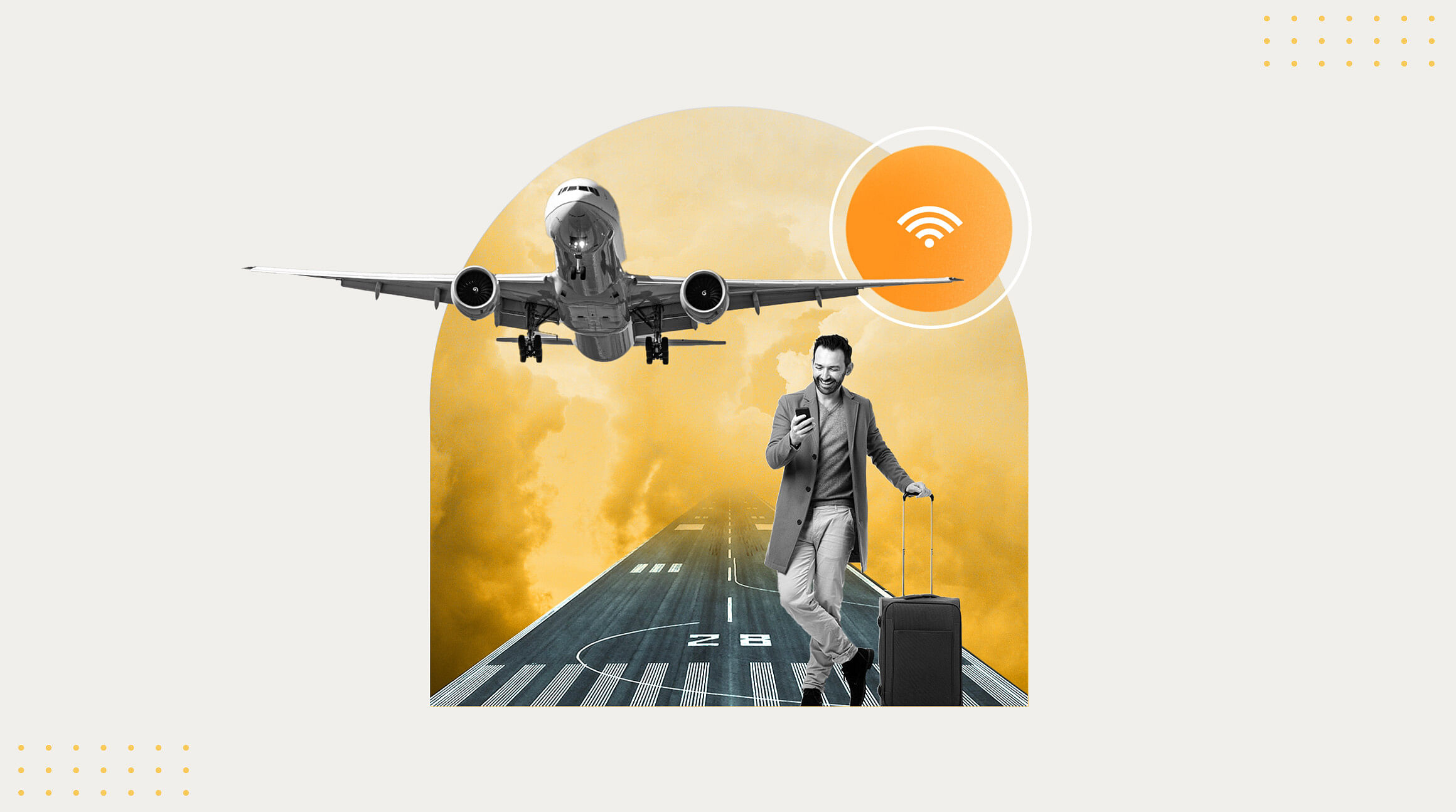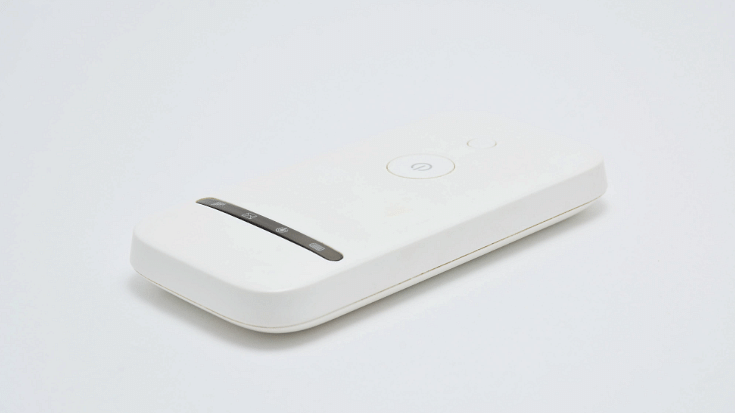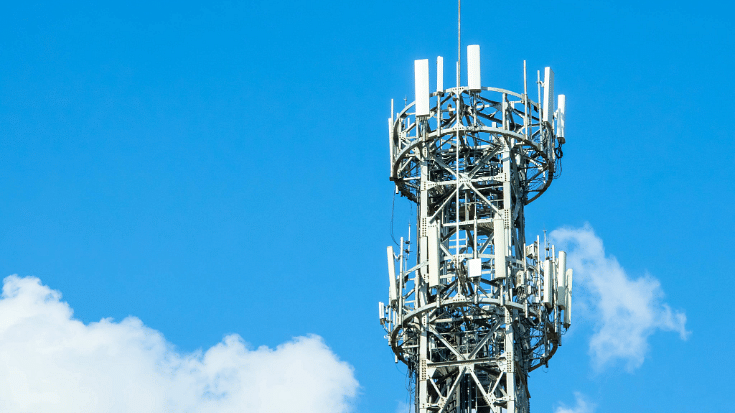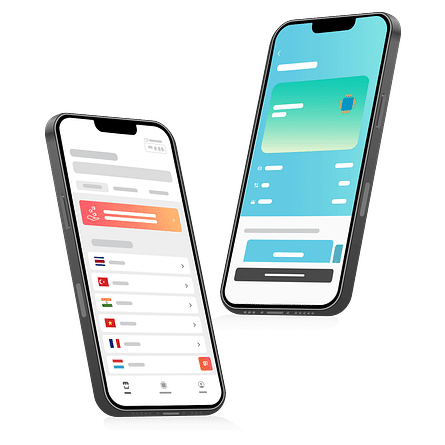
If you're planning to use your portable Wi-Fi device to stay connected on your flight, you might want to have a rethink.
Before you begin dreaming about scrolling through social feeds at 38,000 feet, there's something you should know about portable Wi-Fi for travel.
Can I Use Portable Wi-Fi on a Plane?
While your trusty pocket Wi-Fi device works brilliantly for keeping you online during road trips and city breaks, the rules are a bit different when you're up in the air.
Let's dive into what actually happens when you try to use portable Wi-Fi for planes.
And explore your options for staying connected while flying.
What Is Portable Wi-Fi / Pocket Wi-Fi?
Portable Wi-Fi, often also called pocket Wi-Fi, is essentially your personal internet hotspot in a compact package.
These small, battery-powered devices connect to mobile networks and broadcast Wi-Fi signals to your phone, tablet or laptop.
Think of them as your own mobile internet hub.

Adobe Free Stock / walterericsy
Increasingly popular with travellers, they offer reliable internet access without the steep roaming charges.
Devices pick up 4G or 5G signals from local mobile towers and share that connection with multiple other devices simultaneously.
But here's the crucial part: portable Wi-Fi devices need a mobile signal to function.
They're entirely dependent on connecting to mobile towers on the ground.
Which becomes problematic when you're cruising miles above said towers.
Can You Use Pocket Wi-Fi on a Plane?
The short answer is no, you can't use portable Wi-Fi to get online during your flight.
Your portable Wi-Fi device relies on connecting to communications towers scattered across the landscape below.

Adobe Free Stock / ryanking999
Once your plane leaves the runway and climbs to cruising altitude, those mobile signals become unreachable.
Even if physics wasn't working against you, airline regulations certainly are.
Using any device with a mobile signal while flying goes against airline safety rules.
Flight attendants will ask you to switch all devices to airplane mode, which cuts off mobile connectivity.
So while your pocket W-iFi might work brilliantly when you're waiting in the departure lounge, it becomes about as useful as a chocolate teapot once you're airborne.
What Are Your Wi-Fi Options on a Plane?
You're not completely cut off from the digital world at altitude. Most airlines now offer onboard Wi-Fi, although the experience varies between airlines and aircraft types.
Many airlines provide basic messaging services for free, allowing you to use WhatsApp, iMessage and similar apps without charge.
This keeps you connected for essential communication without breaking the bank.
For anything more demanding, like streaming films and TV shows, video calls or general browsing, you'll typically need to pay for premium Wi-Fi packages.

Adobe Free Stock / Natee Meepian
The pricing can be steep and connection speeds often leave much to be desired compared to what you're used to on the ground.
Not all airlines or aircraft come equipped with Wi-Fi capabilities, though.
So it's worth checking before you fly. Long-haul international flights are more likely to offer it than short, domestic flights.
What You Can Do Instead Of Using Pocket Wi-Fi
Smart travellers prepare for their flight by downloading content before departure.
Streaming services like Netflix, Podbean and Deezer allow you to download shows, podcasts and music for offline viewing and listening.
You can also download offline maps, translation apps and any important documents you might need on the move.
Many travel apps work perfectly well without an internet connection once you've loaded the necessary data.
Keep your phone in airplane mode throughout the flight, then connect to the airline's Wi-Fi network, if available.
Also, consider investing in a travel eSIM for instant connectivity when you land.
Unlike portable Wi-Fi, eSIMs don't add extra devices to your luggage and provide immediate access to local networks upon landing.
When Can I Use Pocket Wi-Fi on a Trip?
Your portable Wi-Fi device becomes useful again the moment you land and switch off airplane mode.
They're ideal for road trips, train journeys, hotel stays and wandering around cities where you need reliable internet access.
Whether you're navigating unfamiliar streets, staying connected during long car journeys or need internet access in areas with poor hotel Wi-Fi, pocket Wi-Fi delivers consistent connectivity.
Just remember, it's only as good as the mobile network coverage in your location.
Remote areas with limited mobile infrastructure may leave you struggling for a signal.
And as it involves a separate physical device, you will need to keep it close by, charged and safe from damage.
Stay Connected On Your Trip With An eSIM from Airalo
Pocket Wi-Fi can't keep you connected mid-flight. But a travel eSIM from Airalo ensures you're online as soon as you touch down.
No waiting for pocket Wi-Fi to power up, no hunting for passwords, no surprise roaming charges and no additional devices to charge and potentially lose.
eSIMs for travel offer the convenience of instant connectivity without the bulk of extra hardware.
Simply download your eSIM from Airalo before departure and activate it upon arrival for immediate access to local networks.
Sort your travel eSIM here ahead of your trip and skip the connectivity scramble at your destination.
FAQs
1. Can I use portable Wi-Fi during a flight?
No, portable Wi-Fi devices cannot be used to access the internet during a flight. They require a connection to ground-based mobile towers, which becomes impossible at cruising altitude. Airline safety regulations prohibit using devices with active mobile connectivity during flight, requiring all passengers to switch to airplane mode.
2. Does portable Wi-Fi work at high altitudes?
Portable Wi-Fi stops working at high altitudes because it relies on mobile tower signals from the ground. Once your plane climbs beyond a few thousand feet, the distance becomes too great for any mobile connection, leaving your device without the network access it needs.
3. What's the best way to get Wi-Fi on a plane?
Your best option is using the airline's onboard Wi-Fi system if there’s one available. Many carriers offer free messaging services, while premium packages allow browsing and streaming. Alternatively, you can download content beforehand and use offline apps to stay productive during your flight without needing an internet connection.
4. Can I use my portable Wi-Fi in the airport?
Yes, portable Wi-Fi works perfectly well in airports, as long as there's mobile network coverage in the area. Airports typically have excellent mobile signal strength, making your portable Wi-Fi device effective for staying connected while waiting for departure or after landing.
5. Is eSIM better than portable Wi-Fi for flying?
Neither will connect during the flight itself. But eSIMs offer significant advantages once you land. They provide instant access to local networks and eliminate the need to carry extra devices or worry about the battery life of separate gadgets. eSIMs for travel are a lightweight, modern alternative to traditional portable Wi-Fi for travel.



